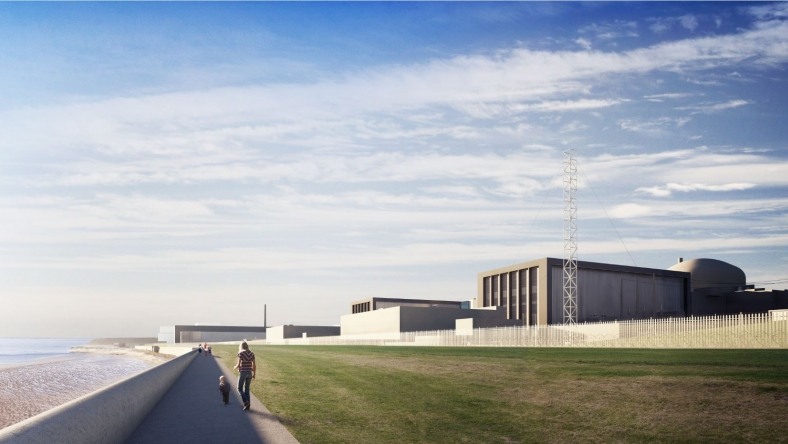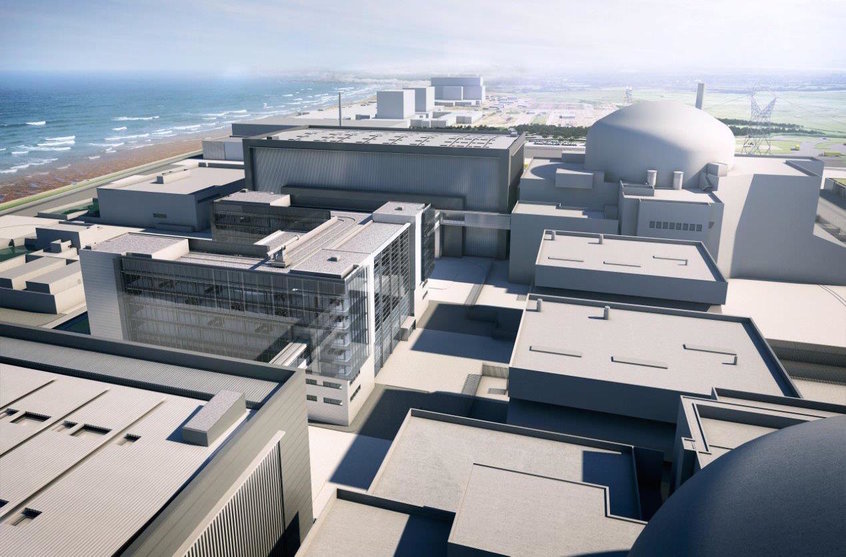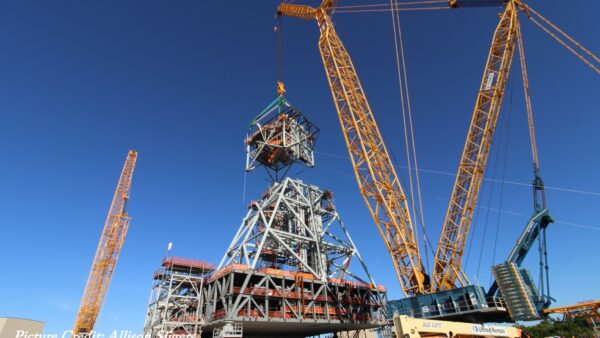Now finally going ahead, the UK’s first new nuclear power station in a generation, Hinkley Point C, divides expert opinion.
The viability of the European Pressurised Reactor (EPR) being used, the economic case for nuclear and its effect on renewables, and the future of power generation itself, are all hotly contested issues.
In the run-up to today’s decision by the UK government to greenlight Hinkley Point C, GCR canvassed opinion among a range of experts and academics. Here are the contours of the debate as it currently stands.
The EPR: A horse worth betting on?
Getting Hinkley right really matters to EDF: they’ve got a huge amount invested and they’ve had many boardroom discussions and engineering and technical discussions about this project, and they’re very confident about taking it forward– Ben Britton, Imperial College London
The European Pressurised Reactor (EPR), is a third-generation design by French nuclear engineer Areva being installed at Hinkley by France’s EDF and China General Nuclear Power Group (CGN).
So far in Europe, two power stations have been started with this design, and both have gone horribly wrong: Olkiluoto 3 in Finland is now nine years late, and Flamanville 3 in Normandy is currently running three years late, and is three times over budget. If the latter opens at the end of 2018, as presently predicted, it will have taken 11 years to build.
Paul Dorfman, senior research fellow at University College London’s Energy Institute, argues that the EPR can be regarded as “a failed reactor”.
He says: “I think it’s generally understood now that the EPR is too complex to be built on time or to cost – you simply cannot do it.” He adds that the other two reactors that will be put into the UK’s new nuclear units, the Toshiba-Westinghouse AP1000 and the GE Hitachi Advanced Boiling Water Reactor, also have issues with their designs.
The backers of Hinkley C argue that, although it’s a stretch to call what happened at Olkiluoto and Flamanville teething problems, that is basically what they are. Diane Coyle, professor of economics at Manchester University, says: “The people at EDF Energy have learned the lessons from Flamanville, and the two EPRs that are due to be installed in China’s Taishan power station are still due to start up next year.”
Ben Britton, a research fellow in advanced nuclear engineering at Imperial College London, echoes this, and adds that the French and Chinese engineers at Hinkley will be the ideal team to tackle EPR five and six. “The Chinese have built very similar designs in Taishan, they have done cold tests, and they are likely to start switching on the reactors in the next four months,” he says. As for EDF, failure simply isn’t an option. “Getting Hinkley right really matters to them: they’ve got a huge amount invested and they’ve had many boardroom discussions and engineering and technical discussions about this project, and they’re very confident about taking it forward. I would take that as a good sign that it’s a horse worth betting on.”
£30bn bill for consumers
EDF puts the build cost of Hinkley C at £18bn over 10 years, excluding finance costs. This is high by international standards, and also high compared with the UK’s other planned reactors, such as NuGen’s £10bn Moorside scheme in Sellafield. The high cost reflects the fact that the UK has to start from scratch in mobilising its nuclear construction supply chain before it can begin work.
EDF will fund around two thirds of that £18bn, and CNG about a third. To help them recoup their investment, the UK government has negotiated what is generally regarded as a generous deal. It will pay a guaranteed price (called a “strike price”) for Hinkley’s electricity for 35 years after the turbines fire up in about 2026 (EDF says it will take 10 years to build). The strike price will be index linked.
After 35 years Hinkley can charge only whatever the wholesale market price is at the time for the remainder of the plant’s 60-year design life. Thirty-five years is a generous cushion period; renewable power schemes typically get 15 years.
If we go for this project we absolutely will not have the money to do the things that we really need to do with grids and renewables– Paul Dorfman, University College London
This price was set in 2013 at £92.20 per megawatt hour (£89.50 if EDF’s other scheme at Sizewell C goes ahead). The electricity suppliers that buy Hinkley’s power will only pay the wholesale price for it, and this is presently about half of the strike price. The shortfall will be made up by “contract for difference” (CfD) payments, ultimately funded by consumers. This means that the lower the price of electricity falls, the more consumers have to pay for the bit that comes from the third generation nuclear stations. The NAO estimates that consumers will pay £29.7bn in top-ups throughout the 35-year guaranteed-price period, based on the wholesale price of electricity in March 2016.
The economics: “insanity”?
EDF negotiated the strike price to cover not just construction costs, but also risks that it, CGN, and their lenders have to bear, such as delays, technical problems and government policy changes. Many see it as a public subsidy.
CfD payments for renewables such as offshore wind are higher now than those agreed for Hinkley C, but they may not be soon. Paul Ekins, an economist and professor of resources at the UCL Institute for Sustainable Resources, says: “It’s perfectly clear to me that this is likely to be above what offshore wind will come in at by 2020 and certainly it will be more expensive by 2025, which is the earliest that Hinkley can come online. So the nominal cost of its power will rise for 35 years whereas the trend in renewables is very firmly downwards.”
Some financial analysts have argued that this will make Hinkley C the most expensive power station in the world per megawatt produced. A report by Liberium Capital in 2013, released shortly after the strike price was agreed, suggested that it was “economically insane” for the consumer, but would allow EDF and CNG to recoup their capital costs in the first 35 years.

(EDF Energy)
For Dorfman, a critic of the scheme, it means that Hinkley will drain finance from the renewables sector. In particular it will take up the money allowed for renewable subsidies by the Levy Control Framework – a mechanism brought in to protect the consumer by capping such subsidies. The framework set the bar at £2bn in 2011 and will raise it to £7.6bn a year in 2020. He says: “We are giving them a 35-year contract index linked, with [£2bn] loan guarantees that will inevitably be used because there’s no question that Hinkley will overrun. If we go for this project we absolutely will not have the money to do the things that we really need to do with grids and renewables. The nuclear option will have eaten up the Levy Control Framework.” In other words, “bad” power drives out “good”.
He adds that, alongside the construction costs and CfD payments, a full accounting has to factor in the management of nuclear waste, the ever-rising estimates for decommissioning, for which the UK government retains some liability, and other more extreme possibilities. For example, Dorfman quotes a 2008 Institute of Mechanical Engineers report called Adapting to the Inevitable, which raises the possibility that nuclear power stations such as Sizewell will “require considerable investment to protect … against rising sea levels, or even abandonment/relocation in the long term”.
Â
A price worth paying?
Are the economics “insane”? Proponents of Hinkley point out that it depends on what happens to the price of fossil fuels, which largely determines the wholesale price of electricity. The wholesale price is low now because fossil fuel prices are so low. But because fossil fuel prices are low, investment in oil and gas exploration has fallen off a cliff, which means that supply might be constrained in 10 years or so, sending fossil fuel prices and cost of electricity up – which would make Hinkley C’s strike price seem not so insane after all.
And what about renewable energy? Investment in renewables is widely applauded, but solar and wind must be backed up by base load generation to keep the lights on when the wind fails and the sun goes down. Nuclear, the argument goes, is the only way to ensure high-efficiency, low-carbon base load.
Diane Coyle argues that natural gas, which is basically methane by another name, is hardly low-carbon, and therefore is not the best choice for base load. Ben Britton concurs. The UK has a high population density with big energy demands. “So, what we need are a few pockets of low-carbon energy that enable us to do great things with our renewables.”
As for Dorfman’s hidden costs, Britton argues that nuclear is held to higher standards than any other part of the power industry, and points out the downsides of both fossil fuels and renewables. “With fossil fuels, fly ash, carbon dioxide and radioactive isotopes all go up the chimney and we sort of forget about them. With renewables there is a cost to putting up a wind turbine in terms of its impact on local habitat and the rare earth materials that go into the gear box.”
And whereas the first generation of the UK’s power stations were designed to produce plutonium waste for the UK’s nuclear weapons, modern plants are much more efficient. “What you want is to get as much energy as possible from the uranium dioxide,” says Britton. “I’ve calculated that a 3GW nuclear power station will generate to 600 to 1,000 cubic metres of low-to-intermediate-level waste and discharge about 71 tonnes of fuel each year, which is equivalent to a 225 cubic metre disposal volume after encapsulation. So, Hinkley C will generate less than one Olympic swimming pool of low-to-intermediate waste per year, and it will take 10 years to fill one pool with unprocessed fuel discharge, and in return you’re getting 6% of the UK’s electricity. An equivalent coal-fired station would produce 1.2 million tonnes of ash.”
Do you need base load?
The people at EDF Energy have learned the lessons from Flamanville– Diane Coyle, Manchester University
Britton’s point is that, by providing the base load, the nuclear industry actually makes a renewables-first energy policy possible. If that really is the case, then the cost of construction risk, the operating costs and the cost of decommissioning and final waste disposal will be painful but worth it, particularly if we eventually get better reactors, and cheaper modular versions.
If it is not the case, then nuclear actually limits our ability to power homes and businesses. This is partly because when renewables cut into base load demand, and you don’t have a way of storing the excess electricity, it all has to be dumped off the system because you have nuclear stations running, and they cannot be switched on and off at whim. It is a hidden cost of nuclear.
The other thread of the argument is that the money that could be spent on developing smart grids, storage and demand management technology, which would allow us to manage base load requirements using renewables, will get eaten up by the nuclear renaissance because of the Levy Control Framework, thus retarding the development of an advanced power network.
It appears to come down to how much faith one has in technology. Some economists, such as Diane Coyle, argue that nobody knows if grid technology will ever allow us to store enough surplus renewable energy to solve the “intermittency” problem and make back up and base load plants obsolete.

(EDF Energy)
For others, such as Ekins, it is a choice we can make. “Technologies such as energy storage, demand-side response with smart meters are already being installed … the full implications of which are not yet understood,” he says. “My feeling is that before 2025, something like Hinkley Point would be needed to meet base load demand, but that after 2025 it’s increasingly unlikely that it will be Hinkley Point, because there will be these other grid management options available that are considerably cheaper than Hinkley. But Hinkley won’t come on stream until 2025.”
Could rainy UK go completely renewable?
The need for base load supply is one of the most hotly contested parts of the nuclear debate, but one academic believes it is a myth, even in rainy UK.
“Global supply of electricity, and possibly all energy, entirely from renewable energy is now technically feasible,” says Mark Diesendorf, associate professor at University of New South Wales.
He admits that UK has much less solar resource per square metre than hot countries. But he says wind energy could be used to produce “windgas”, by electrolysing water to make hydrogen, then converting the hydrogen to methane, which can fuel existing gas turbine power stations.
This argument was developed by the German consultancy Energy Brainpool this year to argue that a combination of wind energy and “windgas” could provide 3.2GW – as much power as Hinkley Point C.
Diesendorf says wind energy could produce other renewable gaseous and liquid fuels to generate heat, electricity and power vehicles. If the UK ever fell short, it could import renewable energy from elsewhere.
“Those countries that don’t have sufficient indigenous renewable energy resources to achieve 100% renewable energy would import renewable energy by transmission line or tanker carrying liquid or gaseous renewable fuels,” he says. “Some countries and regions, such as Australia and North Africa, have huge potential for exporting renewable energy.”
Diesendorf cited a 2014 study by Stanford University engineering professor Mark Jacobson, which argued that all energy use in the US, including transport and heat, could be supplied by renewable electricity.
“It is affordable, although considerable up-front capital cost is needed to make the transition,” Diesendorf says.
Top image shows pre-construction works at Hinkley Point C in May 2015 (EDF Energy)
- This article is taken from a longer analysis to be published in the forthcoming edition of Construction Research & Innovation. Visit here to find out more or order a copy.
Comments
Comments are closed.







The economics of this project may not stack up, except for one issue. The higher the price of electricity the greater the encouragement to use less.
Where petrol is expensive consumers look for cheaper running alternatives. Where it is cheap people drive petrol guzzlers.
The same will be true with electricity. The greatest incentive for reducing carbon emissions is to use less electric power – by making it more expensive.
Yes Mr Brown! However the huge world wide demand for low cost and non polluting energy is giving rise to ever competing natural means of energy generation which is bringing down cost at an exponential rate which is a very good achievement- but for certain political leaders who would much prefer to hold their followers to ransom by refusing to adopt renewable energy in violation of the ever increasing demands for lower energy tariffs! Just how long they will retain their leadership positions remains to be seen!